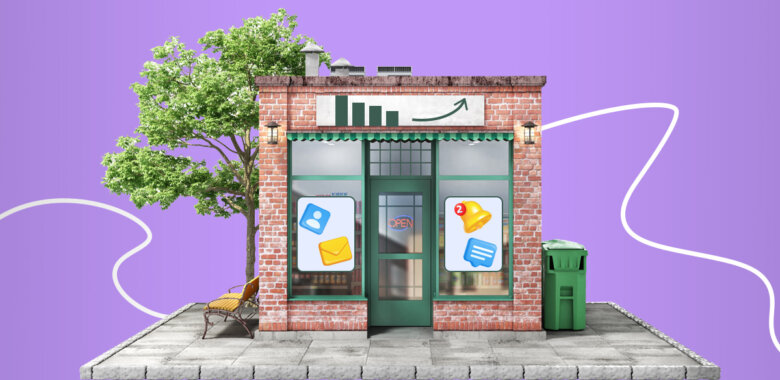Developing a retail marketing strategy step by step
Develop your brand
The company’s brand is its identity. So you need to develop a strong brand and consistently communicate what it represents.
Next, you come up with a style that fits your brand’s aesthetic and resonates with your target audience. You need to pick a name and logo. The logo is usually complemented by other elements like a certain color palette, fonts, and other details that form the style.
Identify your target audience
Find out who your products are for. Who will get the most out of your products? How will you reach them?
While it may sound simple enough, determining a clear target audience can be quite tricky. First, research your potential audience by monitoring statistics and trends or holding surveys.
Next, segment your target audience based on demographics. Will both men and women like your products? What age groups buy from your business most?
Last, keep tracking their likes and dislikes to further specify your target audience and stay relevant to its interests.
Determine the benefits of your products
What do your consumers get out of purchasing your products? Will it improve their lives? How? These are some questions you need to address when it comes to the benefits of your products.
To be sure about your products’ benefits, consider their function, market value, sellability, and customer feedback.
Decide how you want to promote your product
Now, it’s time to put the spotlight on your product and promote it to the public.
Some of the best and most effective ways to advertise your products are:
- Social media ads.
- Email marketing.
- Influencer partnerships.
- Referrals.
Set a budget
Promotional campaigns can get pricey. You need to account for costs in services, platform fees, loss of profit as a result of discounts, etc. If left unchecked, these expenses can rack up so quickly that instead of making a profit, you end up losing money.
Setting a budget also allows you to see which marketing approaches are appropriate for your business model. For example, small businesses will most likely benefit from social media marketing and other low-cost strategies as opposed to launching an expensive nationwide TV campaign.
Start the campaign and track the results
Now for the exciting part — launching the retail marketing strategy! If you successfully finished the previous steps, go ahead and start your promotional activities.
After launching your campaign, you need to keep track of how well it’s performing. Take an email marketing campaign, for example. What are the campaign’s open rates? Are attached links gaining more traffic and click-through? Have sales on advertised products increased?
Note what’s going well and what you can improve. The results of your first campaign(s) will guide the next one.










